NCERT Solutions for Class 7 Maths Chapter 11 Perimeter and Area Ex 11.2
- Class 7 Maths Perimeter and Area Exercise 11.1
- Class 7 Maths Perimeter and Area Exercise 11.2
- Class 7 Maths Perimeter and Area Exercise 11.3
- Class 7 Maths Perimeter and Area Exercise 11.4
NCERT Solutions for Class 7 Maths Chapter 11 Perimeter and Area Exercise 11.2
Ex 11.2 Class 7 Maths Question 1.
Find the area of each of the following parallelograms:
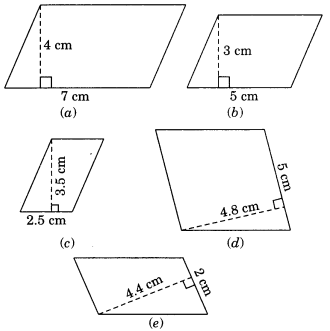
Solution:
(a) Area of the parallelogram
= base × altitude = 7 cm × 4 cm
= 28 cm
2
(b) Area of the parallelogram
= base × altitude = 5 cm × 3 cm
= 15 cm
2
(c) Area of the parallelogram
= base × altitude = 2.5 cm × 3.5 cm
= 8.75 cm
2
(d) Area of the parallelogram
= base × altitude = 5 cm × 4.8 cm
= 24.0 cm
2
(e) Area of the parallelogram
= base × altitude = 2 cm × 4.4 cm
= 8.8 cm
2
Ex 11.2 Class 7 Maths Question 2.
Find the area of each of the following triangles:
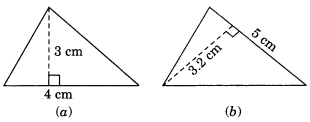
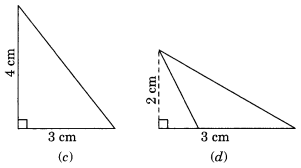
Solution:
Area of the triangle = \(\frac{1}{2}\) × b × h
= \(\frac{1}{2}\) × 4 cm × 3 cm
= 6m
2
(b) Area of the triangle = \(\frac{1}{2}\) × b × h
= \(\frac{1}{2}\) × 5 cm × 3.2 cm
= 8.0 cm
2
(c) Area of the triangle = \(\frac{1}{2}\) × b × l
= \(\frac{1}{2}\) × 3 cm × 4 cm
= 6 cm
2
(d) Area of the triangle = \(\frac{1}{2}\) × b × h
= \(\frac{1}{2}\) × 3 cm × 2 cm
= 3 cm
2
Ex 11.2 Class 7 Maths Question 3.
Find the missing values:
| S.No. | Base | Height | Area of the parallelogram |
| (a) | 20 cm | 246 cm 2 | |
| (6) | 15 cm | 154.5 cm 2 | |
| (c) | 8.4 cm | 48.72 cm 2 | |
| (d) | 15.6 | 16.38 cm 2 |
Solution:
(a) Area of the parallelogram =b × h
246 = 20 × h

(b) Area of the parallelogram = b × h
154.5 = b × 15
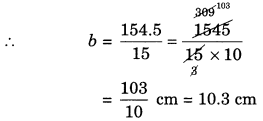
(c) Area of the parallelogram = b × h
48.72 = b × 8.4
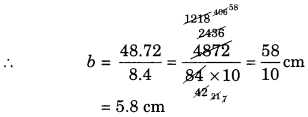
(d) Area of the parallelogram = b × h
16.38 = 15.6 × h
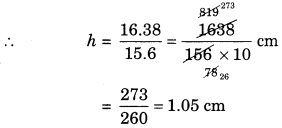
Ex 11.2 Class 7 Maths Question 4.
Find the missing values:
| Base | Height | Area of the triangle |
| 15 cm | — | 87 cm 2 |
| — | 31.4 mm | 1256 mm 2 |
| 22 cm | — | 170.5 cm 2 |
Solution:
(i) Area of the triangle = \(\frac{1}{2}\) × b × h
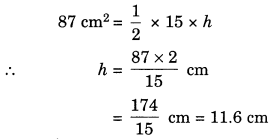
So, the height =11.6 cm
(ii) Area of the triangle = \(\frac{1}{2}\) × b × h

So, the required base = 80 mm.
(iii) Area of the triangle = \(\frac{1}{2}\) × b × h

So, the required height = 15.5 cm
Ex 11.2 Class 7 Maths Question 5.
PQRS is a parallelogram. QM is the height of Q to SR and QN is the height from Q to PS. If SR = 12 cm and QM = 7.6 cm. Find:
(a) the area of the parallelogram PQRS
(b) QN, if PS = 8 cm
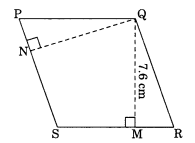
Solution:
(a) Area of the parallelogram PQRS
= SR × QM (∵ Area = Base × Height)
= 12 cm × 7.6 cm
= 91.2 cm
2
(b) Area of the parallelogram PQRS
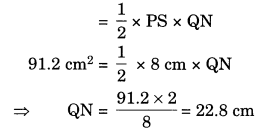
Ex 11.2 Class 7 Maths Question 6.
DL and BM are the heights on sides AB and AD respectively of parallelogram ABCD. If the area of the parallelogram is 1470 cm
2
, AB = 35 cm and AD = 49 cm, find the length of BM and DL.
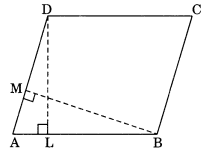
Solution:
Area of the parallelogram ABCD
= AB × DL
⇒ 1470 cm
2
= 35 cm × DL
⇒ \(\frac{1470}{35}\) DL
∴ DL = 42 cm
Area of the parallelogram ABCD = AD × BM
1470 cm
2
= 49 cm × BM
⇒ \(\frac{1470}{49}\) = 30 cm
∴ BM = 30 cm
Hence, BM = 30 cm and DL = 42 cm
Ex 11.2 Class 7 Maths Question 7.
∆ABC is right angled at A. AD is perpendicular to BC. If AB = 5 cm, BC = 13 cm and AC = 12 cm, find the area of ∆ABC. Also find the length of AD.
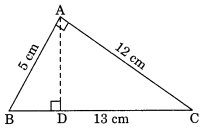
Solution:
Area of right triangle ABC
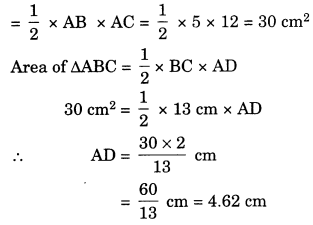
Ex 11.2 Class 7 Maths Question 8.
∆ABC is isosceles with AB = AC = 7.5 cm and BC = 9 cm. The height AD from A to BC, is 6 cm. Find the area of ∆ABC. What will be the height from C to AB i.e., CE?
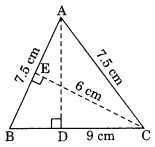
Solution:
Area of ∆ABC = \(\frac{1}{2}\) × base × height
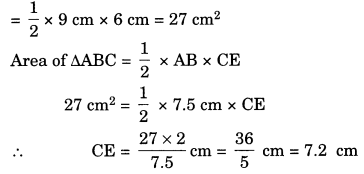
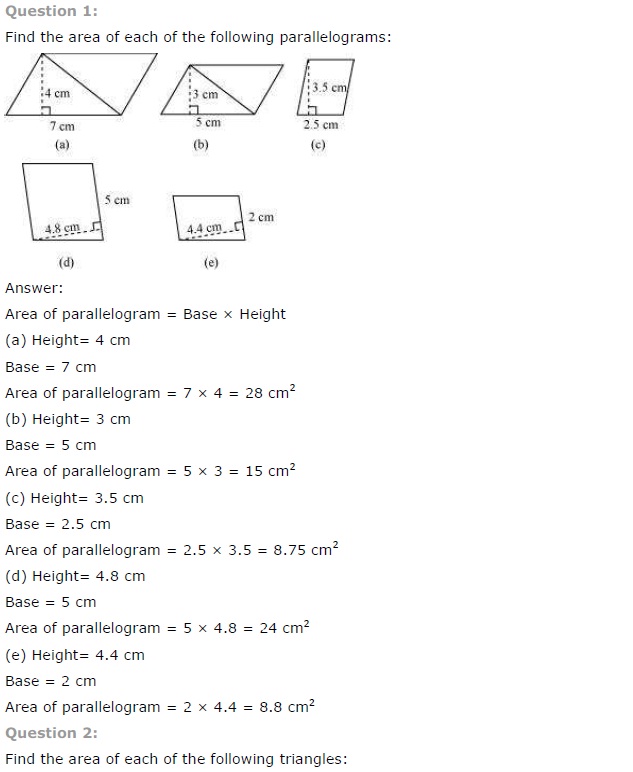
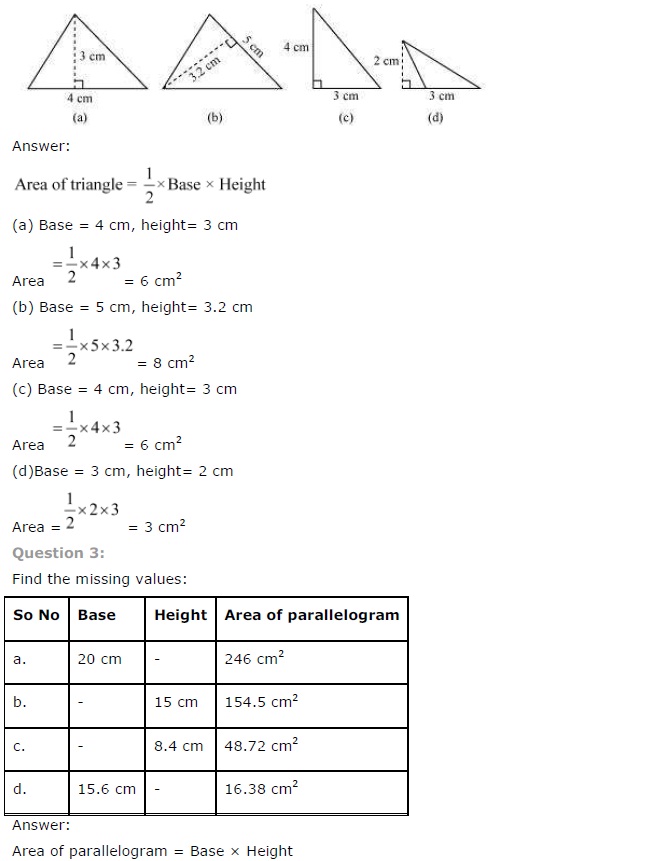
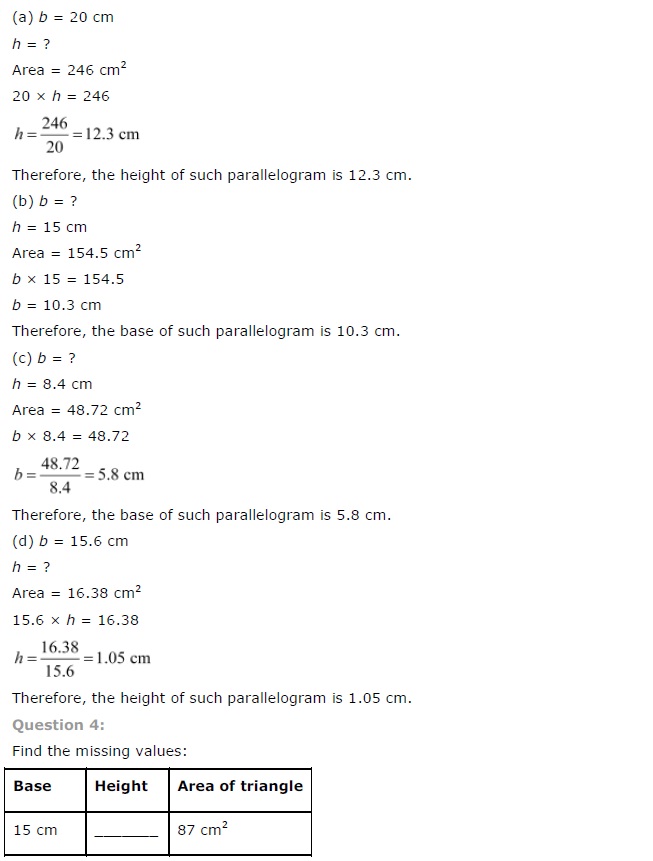
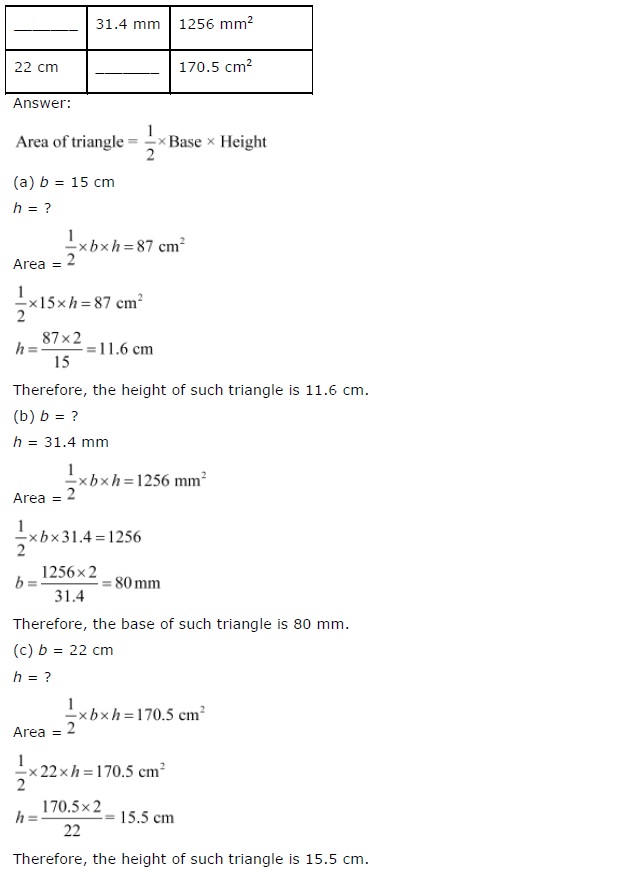
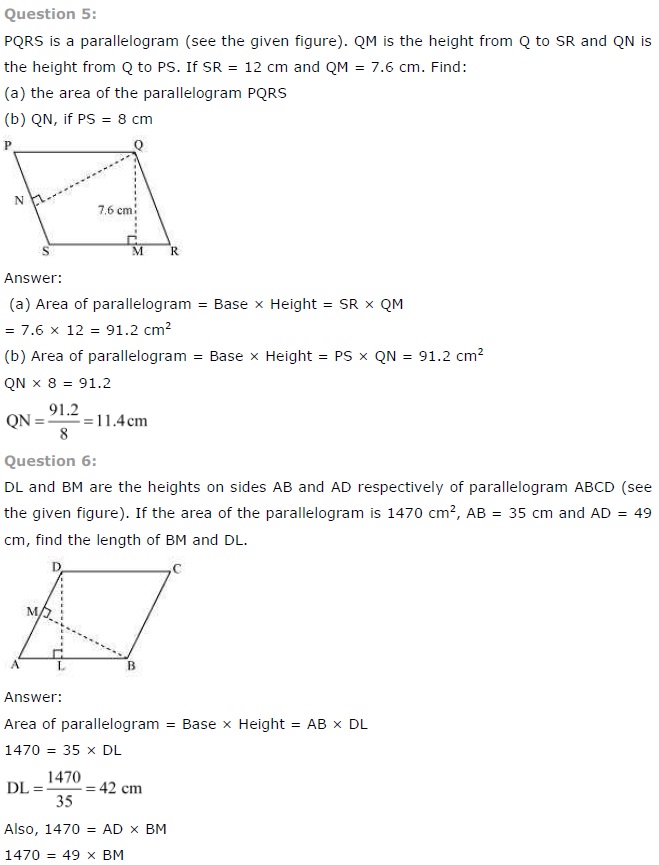
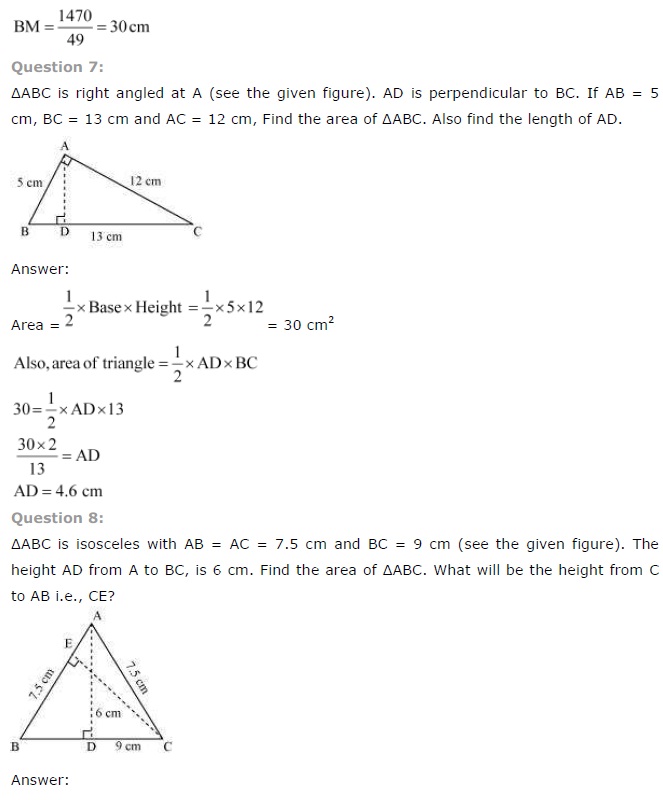
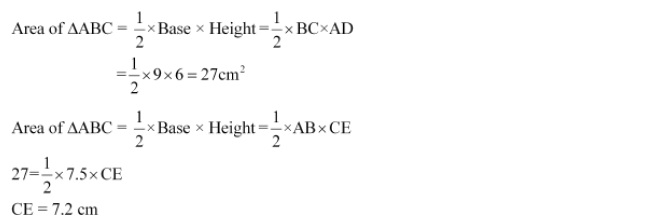
NCERT Solutions Maths Science Social English Sanskrit Hindi RD Sharma